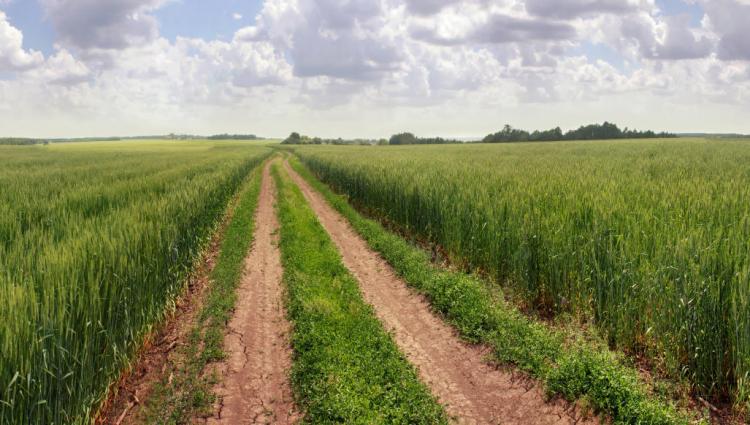The Latest Agricultural Innovations: A 2023 Retrospective

Agriculture professionals, like consumers, can become entrenched in their specific areas of expertise. This sharp focus can often narrow perspectives, and limit potential collaboration with people who may challenge what or how we think, causing a significant barrier to agricultural innovation within our industry.
The Age of Agricultural Innovation is Among Us
It’s important that we all take a step back from our day-to-day, view the broad agricultural ecosystem in front of us and explore positions from other perspectives. We should encourage broader sharing of knowledge across segments and look for opportunities for collaboration to drive sustainability across the ag value chain. As I reflect on some conferences I attended this past year, I’ve noticed an exciting trend towards breaking down silos within the industry. Understanding the nuances of each segment requires a comprehensive grasp of its history and current state, and the focus is beginning to shift from pure competition to collaboration, recognizing that in a world faced with a growing population and finite resources, all sectors must contribute to the greater good of the industry.
The Need to Elevate the Farmer’s Voice
There is progress, but an essential aspect that seems to still be lacking is the recognition of the need to amplify the farmer’s voice in industry discussions. The key players across the complex value chain - including but not limited to farmers, input suppliers, capital suppliers, equipment manufacturers, technology providers, consumer packaged goods (CPG) companies, processors, retailers, and end users - need to work together to better understand each other. There is often a disconnect between professional dialogue about the future of agriculture innovation and the realities farmers face daily to meet current demands. Bridging this gap is crucial for meaningful progress.
For example, too often farmers are being presented with a $10 dollar solution to a $1 dollar problem. This makes new tech adoption and operational changes very difficult to accomplish. Without a proven track record of success, it’s difficult for a farmer to justify taking the risk of adoption due to being economically unviable. If there isn’t a true grasp on the market potential for that new technology, it has no long-term economic viability and will have minimal adoption in the field.
Below, I’ve recapped two of my top ag innovation experiences from this past year, highlighting the main takeaways and what to keep an eye on.
1. FIRA USA 2023: Innovation in Agriculture Robotics
This year’s FIRA USA (International Forum for Agricultural Robotics) conference showcased advancements in agriculture robotics, with a focus on larger amounts of labor required for specialty crops like lettuce, carrots, berries, and other orchard products. Innovations ranged from precision laser weeders to autonomous mechanical weeding systems. A few to highlight:
GUSS: Technology – GUSS (gussag.com)
GUSS, an autonomous orchard sprayer, is not new to the marketplace, but is beginning to cement its position. Sales began in 2019 and as of September 2023, there were upwards of 235 units in the field. GUSS has a unique partnership with John Deere to sell and service their units. They use a patented autonomous technology to be able to operate with precision under tree canopies where traditional solutions have some blind spots. GUSS also has a Select Spray option, which only applies chemicals in appropriate volume when it senses the trees present, reducing overall chemical usage while more accurately applying product.
Swarm Farm: SwarmFarm Robotics | Robotic Agriculture
Swarm Farm, an Australian company, presented a midsize autonomous platform designed around a farmer-first approach, creating a platform that can be serviced by the farmer and add value through supporting a variety of off the shelf implements. Their platforms have already covered more than two million acres in Australia since their inception in 2015 and they have plans to expand into the US market to demonstrate the potential of the scalable farmer-centric technology. The platform was designed and built on farm with the intention of addressing a labor shortage, while allowing 24/7 farming when conditions are right. Swarm Farm’s approach is not “bigger is always better” - instead, they prefer the duplication approach. With autonomous ability, crops can be sprayed and fields can be farmed when conditions are right, no matter the time of day.
Verdant Robotics: Verdant Robotics
Verdant Robotics is taking spot spraying to the next level with its Bullseye Technology. This technology enables millimeter level precision that can handle high density bedded crops, such as carrots, while offering up to a 96% reduction in chemical usage. The same system can also be used to precisely place nutrients on plants. Verdant’s approach is supplying an implement that can fit in the current system, such as a human-driven tractor, with the additional ability to be carried by an autonomous platform.
2. Transform Food & Agriculture USA
A significant challenge discussed at this year’s Transform Food was the difficulty in defining regenerative agriculture. Major CPG companies and other industry stakeholders were using the terms “regenerative ag” and “sustainability” without offering up context to what it means for their respective companies, but consistent definitions matter as we seek alignment across the industry.
Along those lines, collaboration emerged as a central theme with several companies investing in partnerships with integrated farms and cost sharing initiatives. One topic missing from the discussion about sustainability was food waste. While it was brought up, there weren’t any serious conversations around the topic and its impact on the ag ecosystem’s efficiency.
The Path Forward for Ag Innovation
The future of innovation in agriculture hinges on the continued breakdown of barriers across the value chain both in terms of industry silos and conceptual understanding. By elevating the farmer’s voice, defining and aligning on key narratives, and fostering collaboration over competition, the industry can address the challenge of feeding a growing population while mitigating the impact on the finite resources and ecosystem. Working together, we can continue to drive the sustainability and resilience of the agricultural industry.